1. Urata K, Kawasaki S, Matsunami H, Hashikura Y, Ikegami T, Ishizone S, et al. 1995; Calculation of child and adult standard liver volume for liver transplantation. Hepatology. 21:1317–1321. DOI:
10.1002/hep.1840210515. PMID:
7737637.

2. Pomposelli JJ, Tongyoo A, Wald C, Pomfret EA. 2012; Variability of standard liver volume estimation versus software-assisted total liver volume measurement. Liver Transpl. 18:1083–1092. DOI:
10.1002/lt.23461. PMID:
22532341.

3. Hwang S, Ha TY, Song GW, Jung DH, Ahn CS, Moon DB, et al. 2015; Quantified risk assessment for major hepatectomy via the indocyanine green clearance rate and liver volumetry combined with standard liver volume. J Gastrointest Surg. 19:1305–1314. DOI:
10.1007/s11605-015-2846-8. PMID:
25947549.

4. Fearon K, Strasser F, Anker SD, Bosaeus I, Bruera E, Fainsinger RL, et al. 2011; Definition and classification of cancer cachexia: an international consensus. Lancet Oncol. 12:489–495. DOI:
10.1016/S1470-2045(10)70218-7.

5. Montano-Loza AJ, Meza-Junco J, Baracos VE, Prado CM, Ma M, Meeberg G, et al. 2014; Severe muscle depletion predicts postoperative length of stay but is not associated with survival after liver transplantation. Liver Transpl. 20:640–648. DOI:
10.1002/lt.23863. PMID:
24678005.

6. Shen W, Punyanitya M, Wang Z, Gallagher D, St-Onge MP, Albu J, et al. 2004; Total body skeletal muscle and adipose tissue volumes: estimation from a single abdominal cross-sectional image. J Appl Physiol (1985). 97:2333–2338. DOI:
10.1152/japplphysiol.00744.2004. PMID:
15310748.

7. Golse N, Bucur PO, Ciacio O, Pittau G, Sa Cunha A, Adam R, et al. 2017; A new definition of sarcopenia in patients with cirrhosis undergoing liver transplantation. Liver Transpl. 23:143–154. DOI:
10.1002/lt.24671. PMID:
28061014.

8. Prado CM, Lieffers JR, McCargar LJ, Reiman T, Sawyer MB, Martin L, et al. 2008; Prevalence and clinical implications of sarcopenic obesity in patients with solid tumours of the respiratory and gastrointestinal tracts: a population-based study. Lancet Oncol. 9:629–635. DOI:
10.1016/S1470-2045(08)70153-0.

10. Hwang S, Lee SG, Lee YJ, Park KM, Jeon HB, Kim PN, et al. 1997; Calculation of standard liver volume of Korean adults. Korean J Hepatobiliary Pancreat Surg. 1:59–65.
11. Hashimoto T, Sugawara Y, Tamura S, Hasegawa K, Kishi Y, Kokudo N, et al. 2006; Estimation of standard liver volume in Japanese living liver donors. J Gastroenterol Hepatol. 21:1710–1713. DOI:
10.1111/j.1440-1746.2006.04433.x. PMID:
16984594.

12. Yuan D, Lu T, Wei YG, Li B, Yan LN, Zeng Y, et al. 2008; Estimation of standard liver volume for liver transplantation in the Chinese population. Transplant Proc. 40:3536–3540. DOI:
10.1016/j.transproceed.2008.07.135. PMID:
19100432.

13. Poovathumkadavil A, Leung KF, Al Ghamdi HM, Othman Iel H, Meshikhes AW. 2010; Standard formula for liver volume in Middle Eastern Arabic adults. Transplant Proc. 42:3600–3605. DOI:
10.1016/j.transproceed.2010.07.098. PMID:
21094823.

14. Martin L, Birdsell L, Macdonald N, Reiman T, Clandinin MT, McCargar LJ, et al. 2013; Cancer cachexia in the age of obesity: skeletal muscle depletion is a powerful prognostic factor, independent of body mass index. J Clin Oncol. 31:1539–1547. DOI:
10.1200/JCO.2012.45.2722. PMID:
23530101.

15. Kim EY, Kim YS, Park I, Ahn HK, Cho EK, Jeong YM. 2015; Prognostic significance of CT-determined sarcopenia in patients with small-cell lung cancer. J Thorac Oncol. 10:1795–1799. DOI:
10.1097/JTO.0000000000000690. PMID:
26484630.

16. Kim EY, Lee HY, Kim YS, Park I, Ahn HK, Cho EK, et al. 2018; Prognostic significance of cachexia score assessed by CT in male patients with small cell lung cancer. Eur J Cancer Care (Engl). 27:e12695. DOI:
10.1111/ecc.12695. PMID:
28426181.

17. Zheng ZF, Lu J, Zheng CH, Li P, Xie JW, Wang JB, et al. 2017; A novel prognostic scoring system based on preoperative sarcopenia predicts the long-term outcome for patients after r0 resection for gastric cancer: experiences of a high-volume center. Ann Surg Oncol. 24:1795–1803. DOI:
10.1245/s10434-017-5813-7. PMID:
28213789.

18. Kim KM, Jang HC, Lim S. 2016; Differences among skeletal muscle mass indices derived from height-, weight-, and body mass index-adjusted models in assessing sarcopenia. Korean J Intern Med. 31:643–650. DOI:
10.3904/kjim.2016.015. PMID:
27334763. PMCID:
PMC4939509.

19. Merrill Z, Perera S, Chambers A, Cham R. 2019; Age and body mass index associations with body segment parameters. J Biomech. 88:38–47. DOI:
10.1016/j.jbiomech.2019.03.016. PMID:
30914188.

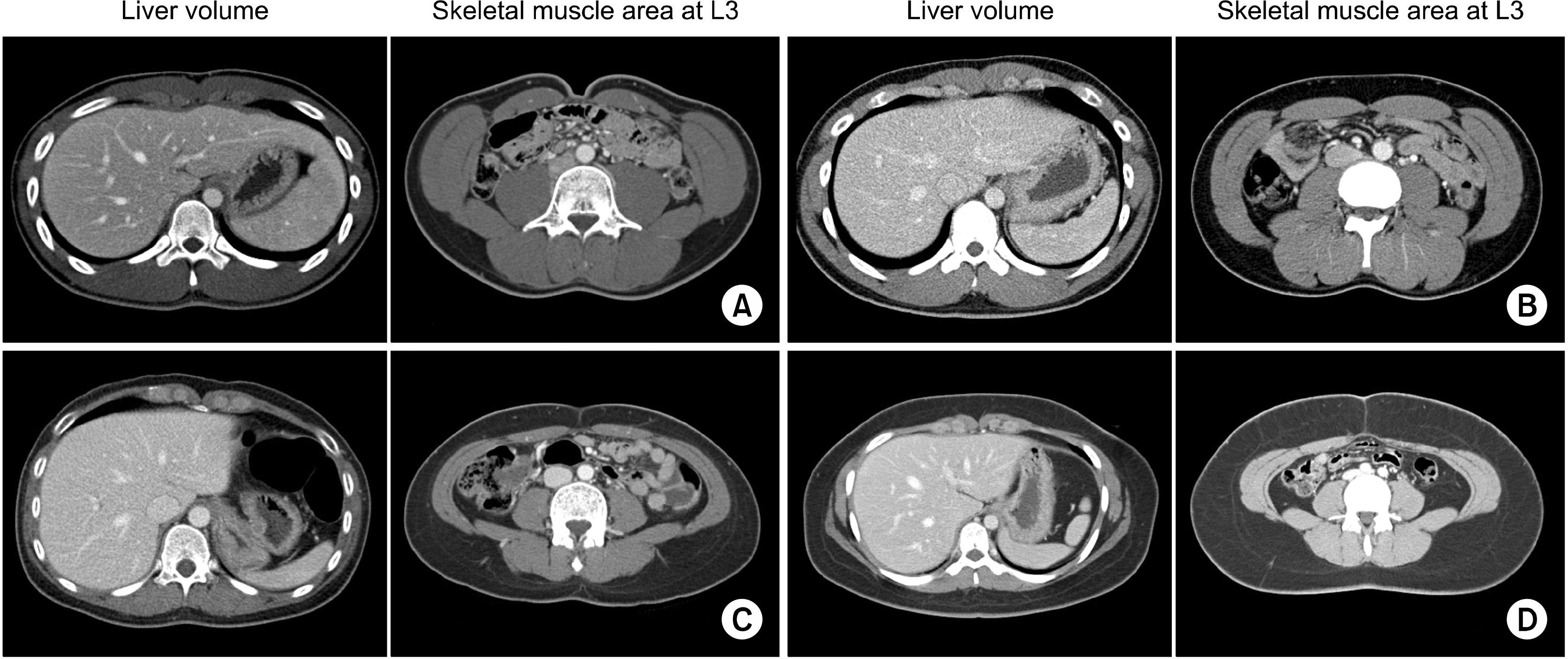




 PDF
PDF Citation
Citation Print
Print



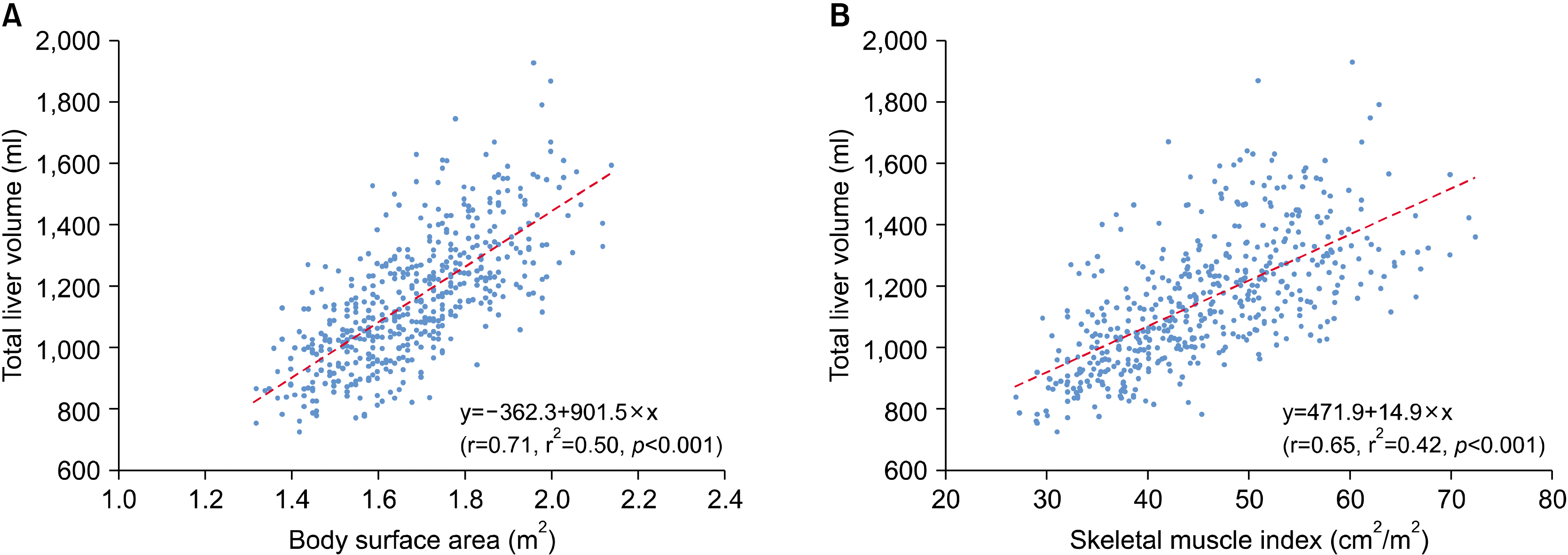
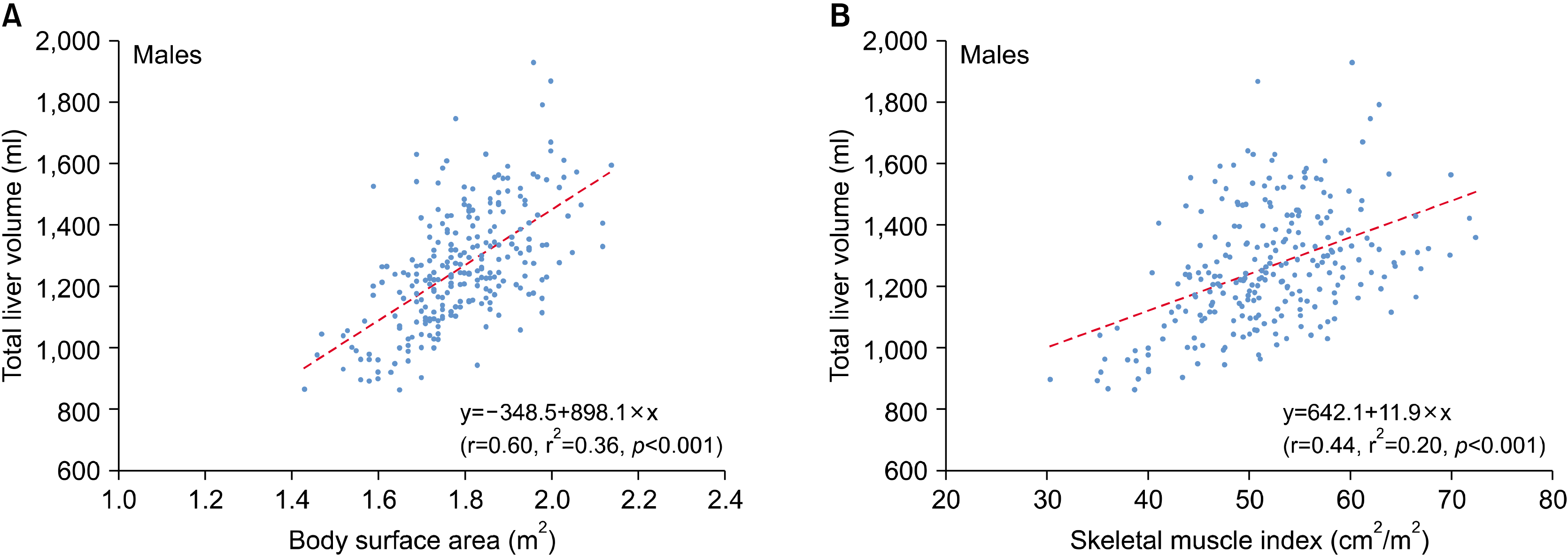
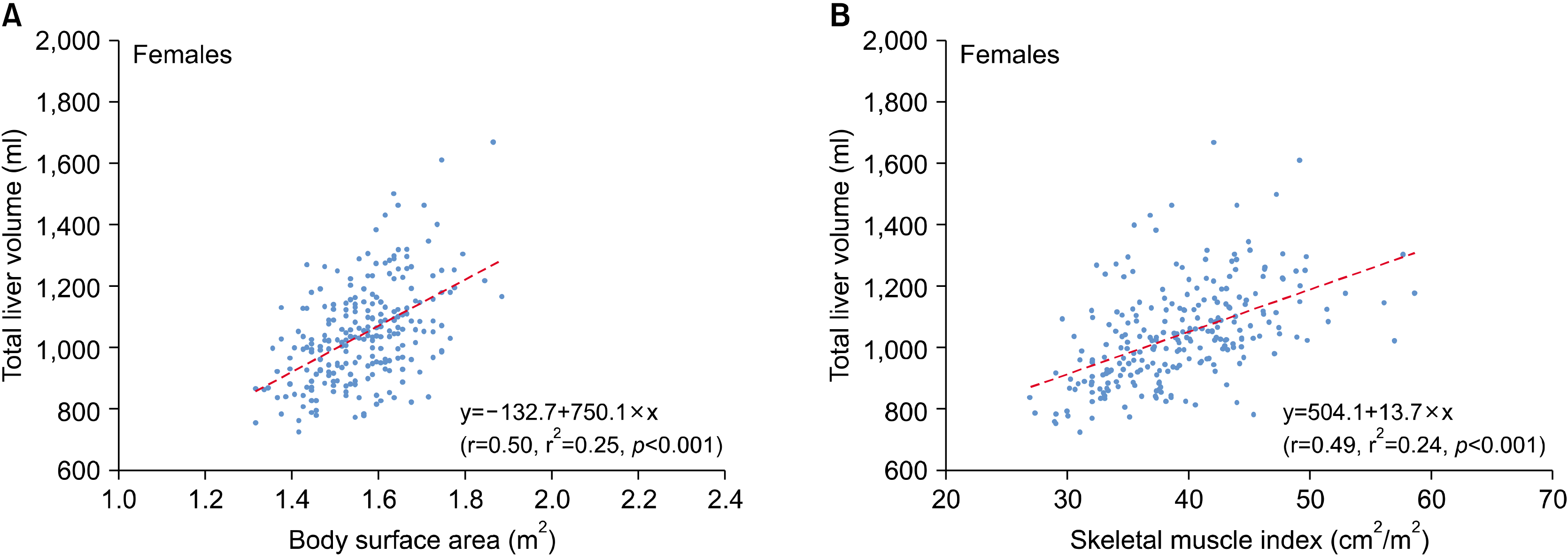
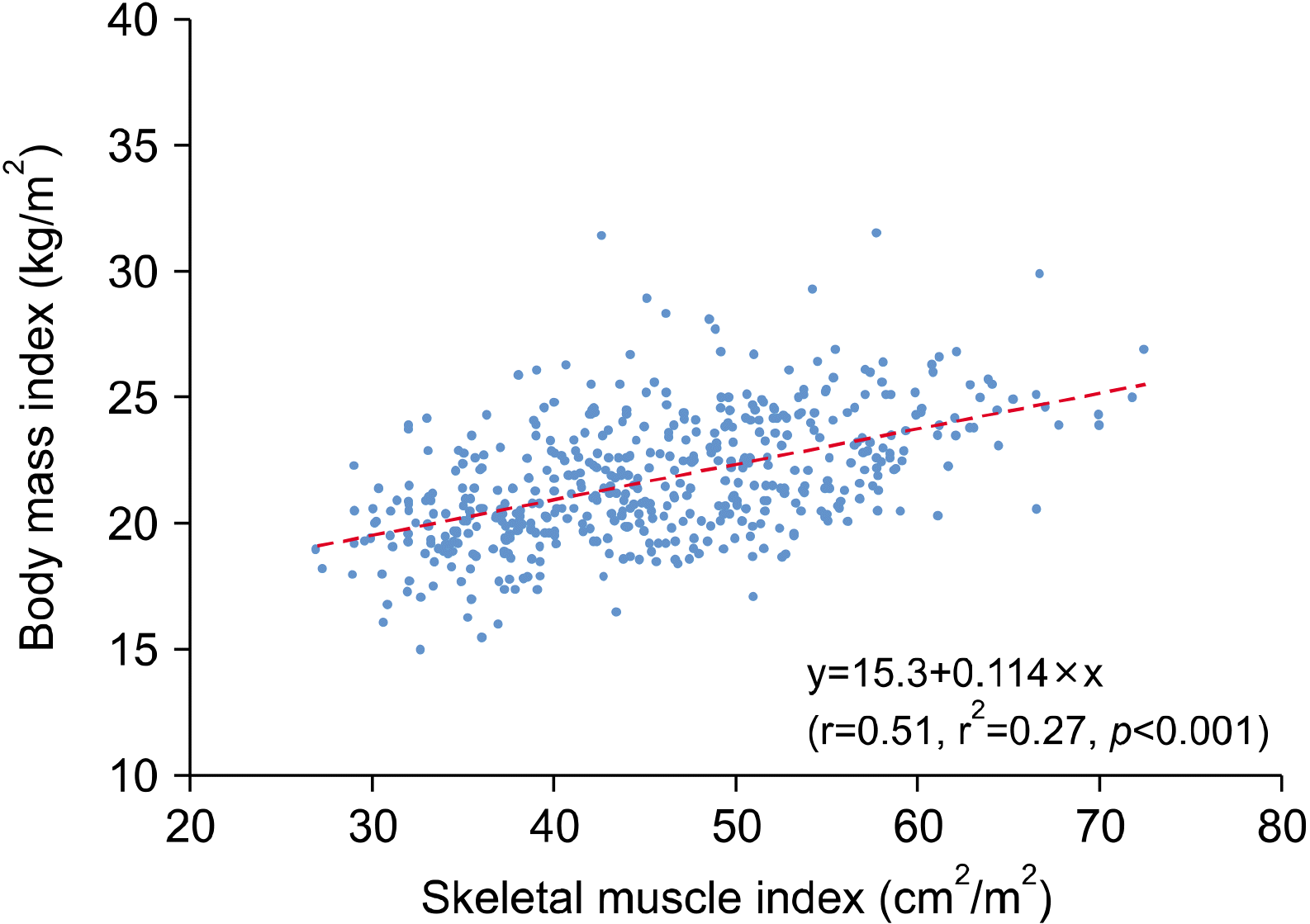
 XML Download
XML Download